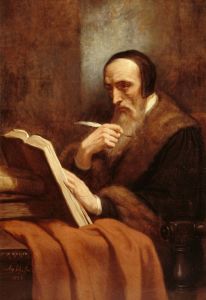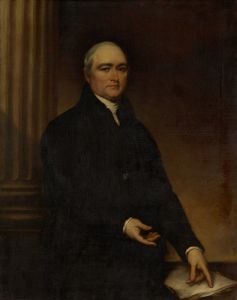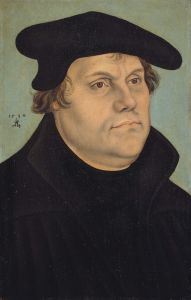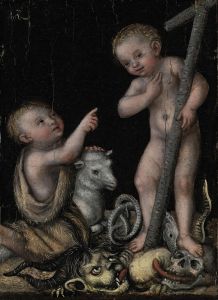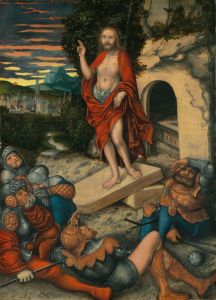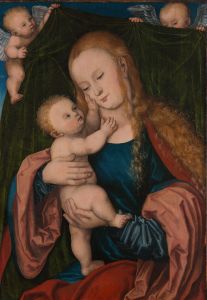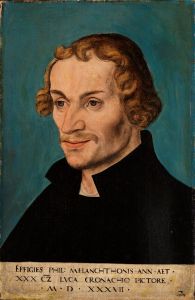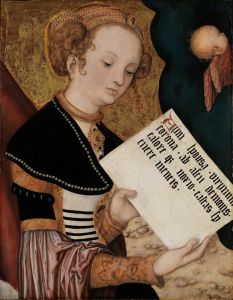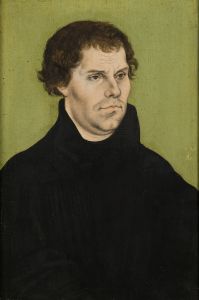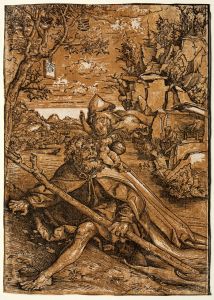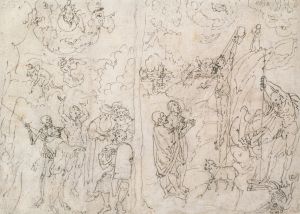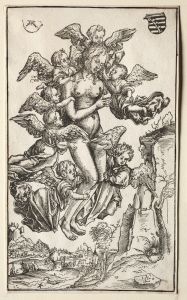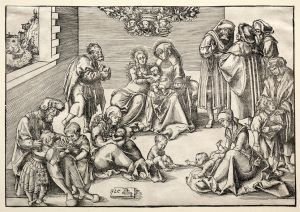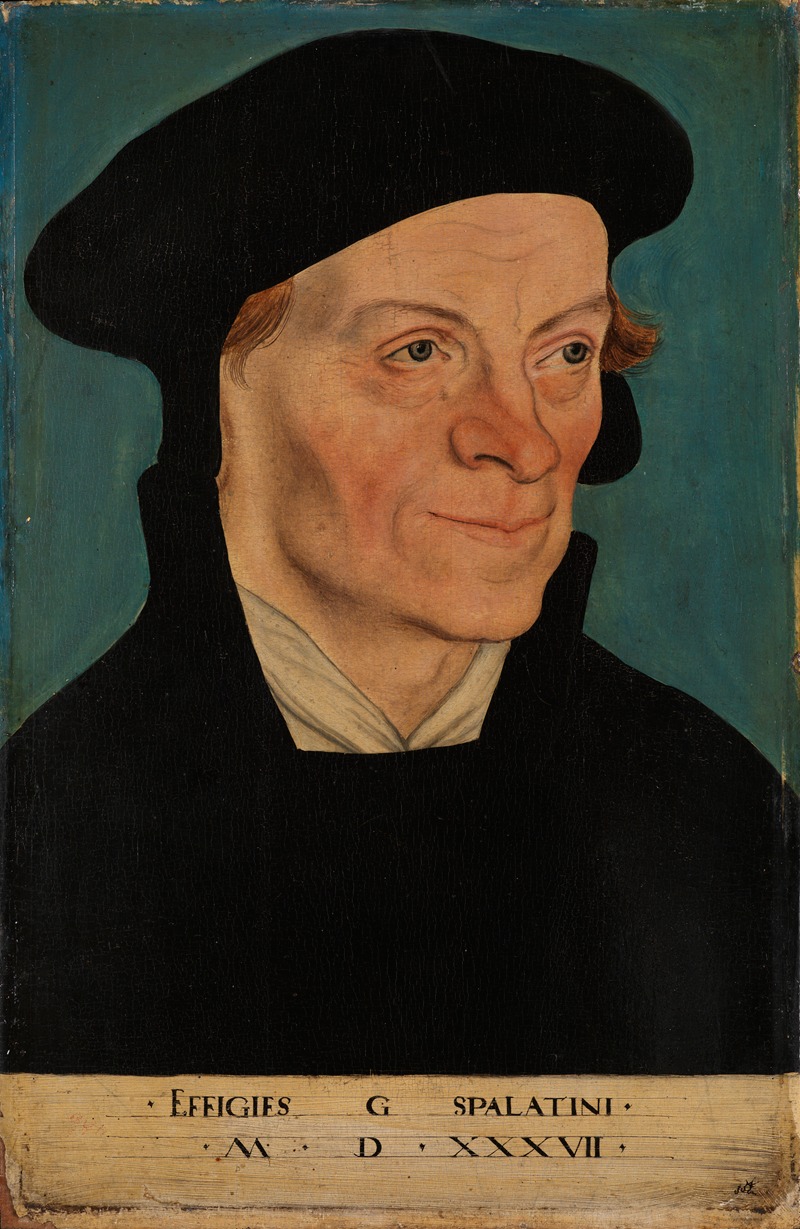
Bildnis des Reformators Georg Spalatin
A hand-painted replica of Lucas Cranach the Elder’s masterpiece Bildnis des Reformators Georg Spalatin, meticulously crafted by professional artists to capture the true essence of the original. Each piece is created with museum-quality canvas and rare mineral pigments, carefully painted by experienced artists with delicate brushstrokes and rich, layered colors to perfectly recreate the texture of the original artwork. Unlike machine-printed reproductions, this hand-painted version brings the painting to life, infused with the artist’s emotions and skill in every stroke. Whether for personal collection or home decoration, it instantly elevates the artistic atmosphere of any space.
Lucas Cranach the Elder, a prominent German Renaissance painter, created the portrait "Bildnis des Reformators Georg Spalatin" around 1520. This artwork is a significant representation of the Reformation period, capturing the likeness of Georg Spalatin, a key figure in the Protestant Reformation. Spalatin, born Georg Burkhardt in 1484, was a close associate of Martin Luther and served as a court chaplain and secretary to Frederick the Wise, Elector of Saxony. His role in the Reformation was crucial, as he acted as a mediator between Luther and the political authorities, facilitating the spread of Reformation ideas.
The portrait by Cranach is notable for its detailed and realistic depiction of Spalatin, reflecting the artist's skill in capturing the personality and status of his subjects. Cranach was known for his ability to portray the human figure with precision and subtlety, and this work is no exception. The painting shows Spalatin in a three-quarter view, dressed in the attire typical of a man of his position and time. His expression is calm and contemplative, suggesting his intellectual and spiritual depth.
Cranach's association with the Reformation and its leaders was well-established, as he was a close friend of Martin Luther and produced numerous portraits of Luther and other reformers. His workshop in Wittenberg became a hub for Reformation art, producing works that were both religious and political in nature. The portrait of Spalatin is part of this larger body of work that supported and documented the Reformation movement.
The painting is executed in oil on panel, a common medium for the time, which allowed for fine detail and vibrant color. Cranach's use of color and light in the portrait emphasizes the dignity and importance of Spalatin, while the simplicity of the background keeps the focus on the subject. This technique was typical of Cranach's portraiture, where the emphasis was placed on the sitter's face and expression.
"Bildnis des Reformators Georg Spalatin" is housed in the collection of the Staatliche Kunstsammlungen Dresden, one of the most important art collections in Germany. The painting is an important historical document, providing insight into the personalities who shaped the Reformation and the role of art in this transformative period. Cranach's work not only served as a means of personal expression but also as a tool for communication and propaganda, helping to spread the ideas of the Reformation through visual means.
In summary, Lucas Cranach the Elder's portrait of Georg Spalatin is a masterful work that captures the essence of a key figure in the Protestant Reformation. Through his skillful use of portraiture, Cranach provides a window into the lives and thoughts of the individuals who played pivotal roles in this significant historical movement. The painting remains a testament to the power of art to document and influence history.





